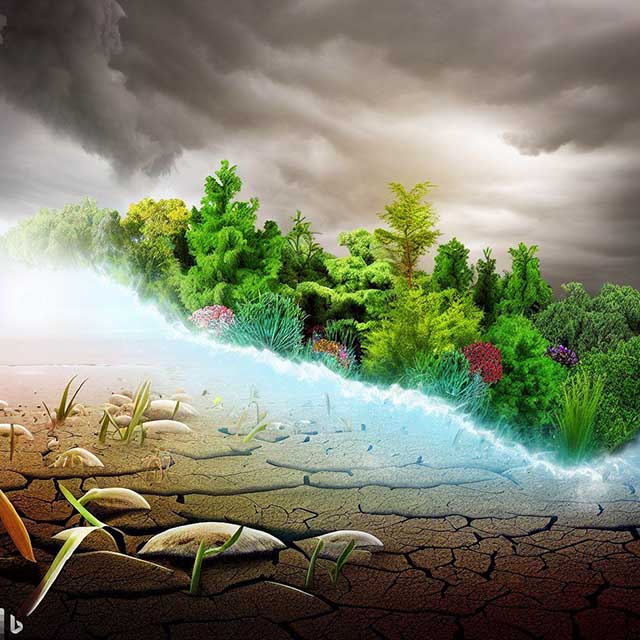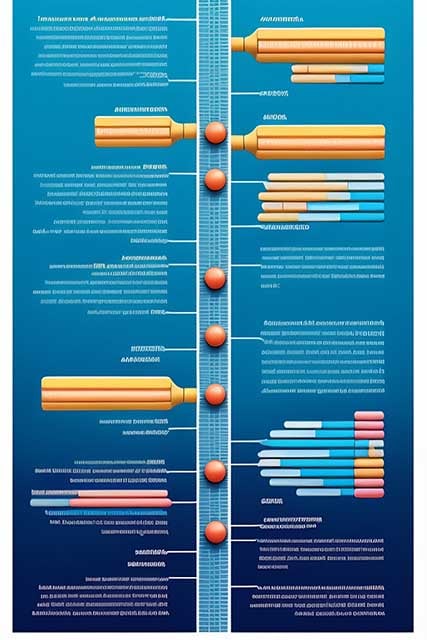I. Introduction
- A brief overview of biodiversity and why it is important
II. Definition and Importance of Biodiversity
- Definition of biodiversity
- Explanation of the different levels of biodiversity (genetic, species, ecosystem)
- Description of the importance of biodiversity for ecological processes and ecosystem services
III. Threats to Biodiversity
- Overview of the main threats to biodiversity such as habitat destruction, climate change, pollution, and over-exploitation
- Discussion of the impact of these threats on biodiversity and the consequences for human well-being
IV. Conservation and Protection of Biodiversity
- Overview of the main conservation strategies and approaches such as protected areas, species recovery programs, and habitat restoration
- Discussion of the challenges and limitations of these strategies and approaches
V. Conclusion
- Summary of the importance of biodiversity and the need for ongoing conservation efforts to protect it.
VI. References
- A list of sources used in the blog post.
I. Introduction
Biodiversity refers too the variety of life on Earth, including the diversity of species, ecosystems, and genetic variation within species. This diversity is essential for the functioning of ecosystems and the provision of services that support human well-being. However, biodiversity is currently under threat from human activities such as habitat destruction, climate change, pollution, and over-exploitation.
Biodiversity is important for a variety of reasons. First and foremost, it is the foundation of all ecosystems and the services they provide. Ecosystems with high biodiversity are more resilient and better able to adapt to change, such as climate change. Biodiversity also plays a critical role in maintaining the Earth's life-support systems, including air and water quality, climate regulation, and nutrient cycling. Additionally, biodiversity is important for cultural, aesthetic, and recreational values, as well as for the provision of food, medicine, and other resources.
Biodiversity is also important from an economic perspective. The services provided by ecosystems, such as polination, pest control, and carbon sequestration, are estimated to be worth trillions of dollars globally. The loss of biodiversity can have significant economic consequences, such as increased costs for agriculture and decreased tourism revenue.
II. Definition and Importance of Biodiversity

Biodiversity can be defined as the variety of life on Earth, including the diversity of species, ecosystems, and genetic variation within species. Biodiversity can be considered at different levels, including genetic, species, and ecosystem diversity.
Genetic diversity refers to the variation of genetic information within a species. This variation can arise from mutations, genetic drift, and natural selection, and it is the foundation for evolution and adaptation. Genetic diversity allows populations to adapt to changing conditions and increases the chances of survival for a species.
Species diversity refers to the variety of different species within an ecosystem. This includes the number of different species, as well as their relative abundance and distribution. Species diversity is important for ecosystem functioning, as different species have unique roles and interactions within an ecosystem.
Ecosystem diversity refers to the variety of different ecosystems within a region or on a global scale. This includes different types of habitats, such as forests, wetlands, and grasslands, as well as the interactions between different ecosystems. Ecosystem diversity is important for the provision of ecosystem services and the maintenance of biodiversity.
The importance of biodiversity for ecological processes and ecosystem services cannot be overstated. Biodiversity is essential for the functioning of ecosystems, including nutrient cycling, pollination, pest control, and climate regulation. Ecosystems with high biodiversity are more resilient and better able to adapt to change. Biodiversity also plays a critical role in maintaining the Earth's life-support systems, including air and water quality, climate regulation, and nutrient cycling. Additionally, biodiversity is important for cultural, aesthetic, and recreational values, as well as for the provision of food, medicine, and other resources. The loss of biodiversity can have significant ecological and economic consequences, such as increased costs for agriculture and decreased tourism revenue.
III. Threats to Biodiversity 
Threats to biodiversity are diverse and complex, but some of the main drivers of biodiversity loss include habitat destruction, climate change, pollution, and over-exploitation.
Habitat destruction is one of the most significant threats to biodiversity. Human activitys such as urbanization, agriculture, and resource extraction can lead to the destruction or fragmentation of habitats, making it difficult for species to survive. Habitat destruction also disrupts the functioning of ecosystems, leading to the loss of ecosystem services that support human well-being.
Climate change is another major threat to biodiversity. Changes in temperature and precipitation patterns can affect the distribution and abundance of species, as well as the timing of life-cycle events such as migration and reproduction. Climate change also exacerbates other threats to biodiversity, such as habitat destruction and over-exploitation.
Pollution is another major threat to biodiversity, as it can contaminate the air, water, and soil, making it difficult for species to survive. Pollution can also disrupt the functioning of ecosystems, leading to the loss of ecosystem services that support human well-being.
Over-exploitation is another major threat to biodiversity, as it can lead to the depletion of populations of fish, wildlife, and other resources. Over-exploitation can also disrupt the functioning of ecosystems, leading to the loss of ecosystem services that support human well-being.
The impact of these threats on biodiversity is significant and can lead to the extinction of species and the loss of ecosystem services that support human well-being. The loss of biodiversity can also have significant economic consequences, such as increased costs for agriculture and decreased tourism revenue. In addition, the loss of biodiversity can also have negative impacts on human health and well-being, as well as cultural and spiritual values.
IV. Conservation and Protection of Biodiversity

Conservation and protection of biodiversity are essential to ensure the survival of species and the functioning of ecosystems. There are a variety of strategies and approaches that can be used to conserve and protect biodiversity, including protected areas, species recovery programs, and habitat restoration.
Protected areas are one of the most common strategies used to conserve biodiversity. These areas are set aside to protect natural habitats and the species that depend on them. Protected areas can include national parks, wilderness areas, and marine protected areas. However, protected areas alone are not enough to fully protect biodiversity and may not be effective if not properly managed and enforced.
Species recovery programs are another strategy used to conserve biodiversity. These programs focus on the conservation and recovery of specific species or groups of species that are at risk of extinction. These programs can include captive breeding, reintroduction, and habitat restoration efforts.
Habitat restoration is another important strategy used to conserve biodiversity. This approach aims to restore degraded or destroyed habitats to improve the survival and recovery of species. Habitat restoration can include a variety of activities such as the removal of invasive species, the reintroduction of native species, and the restoration of natural processes.
Despite these efforts, conservation and protection of biodiversity face many challenges and limitations. These include lack of funding and political will, lack of effective management and enforcement, conflicting interests and values, and the complexity of biodiversity conservation itself. Climate change, which is also a major threat to biodiversity, is also making conservation efforts more difficult as it increases the rate of species extinction and habitat destruction.
V. Conclusion: Why is biodiversity important?
In conclusion, biodiversity is the foundation of life on Earth and is essential for the functioning of ecosystems, the provision of services that support human well-being, and economic prosperity. However, human activities continue to pose a threat to biodiversity through habitat destruction, climate change, pollution, and over-exploitation.
The importance of biodiversity for ecological processes and ecosystem services cannot be overstated. Biodiversity is essential for the functioning of ecosystems, including nutrient cycling, pollination, pest control, and climate regulation. Ecosystems with high biodiversity are more resilient and better able to adapt to change. Biodiversity also plays a critical role in maintaining the Earth's life-support systems, including air and water quality, climate regulation, and nutrient cycling. Additionally, biodiversity is important for cultural, aesthetic, and recreational values, as well as for the provision of food, medicine, and other resources. The loss of biodiversity can have significant ecological and economic consequences, such as increased costs for agriculture and decreased tourism revenue.
Conservation and protection of biodiversity are essential to ensure the survival of species and the functioning of ecosystems. There are a variety of strategies and approaches that can be used to conserve and protect biodiversity, including protected areas, species recovery programs, and habitat restoration. However, conservation and protection of biodiversity face many challenges and limitations, including lack of funding, conflicting interests, and the complexity of biodiversity conservation itself. Climate change is also making conservation efforts more difficult.
VI. References
-
Convention on Biological Diversity. (2020). What is Biological Diversity?. Retrieved from https://www.cbd.int/biodiversity/
-
Millennium Ecosystem Assessment. (2005). Ecosystems and Human Well-being: Biodiversity Synthesis. Retrieved from https://www.millenniumassessment.org/documents/document.356.aspx.pdf
-
Secretariat of the Convention on Biological Diversity. (2020). Global Biodiversity Outlook 5. Retrieved from https://www.cbd.int/gbo5/
-
Intergovernmental Science-Policy Platform on Biodiversity and Ecosystem Services. (2019). Global Assessment Report on Biodiversity and Ecosystem Services. Retrieved from https://www.ipbes.net/global-assessment



